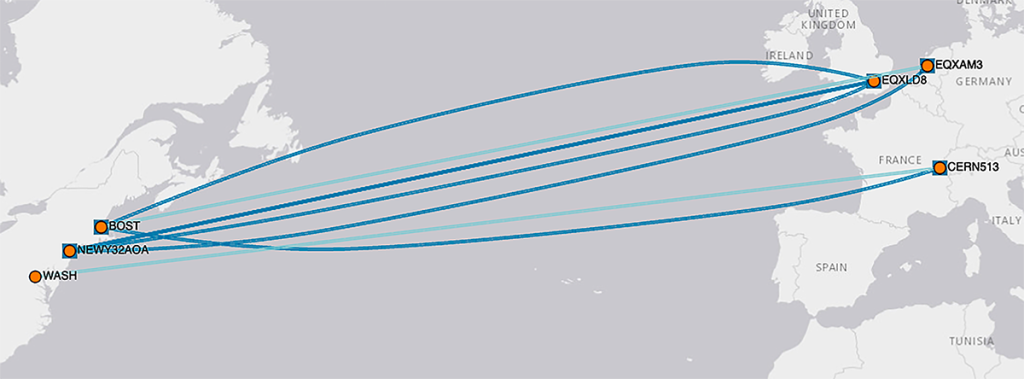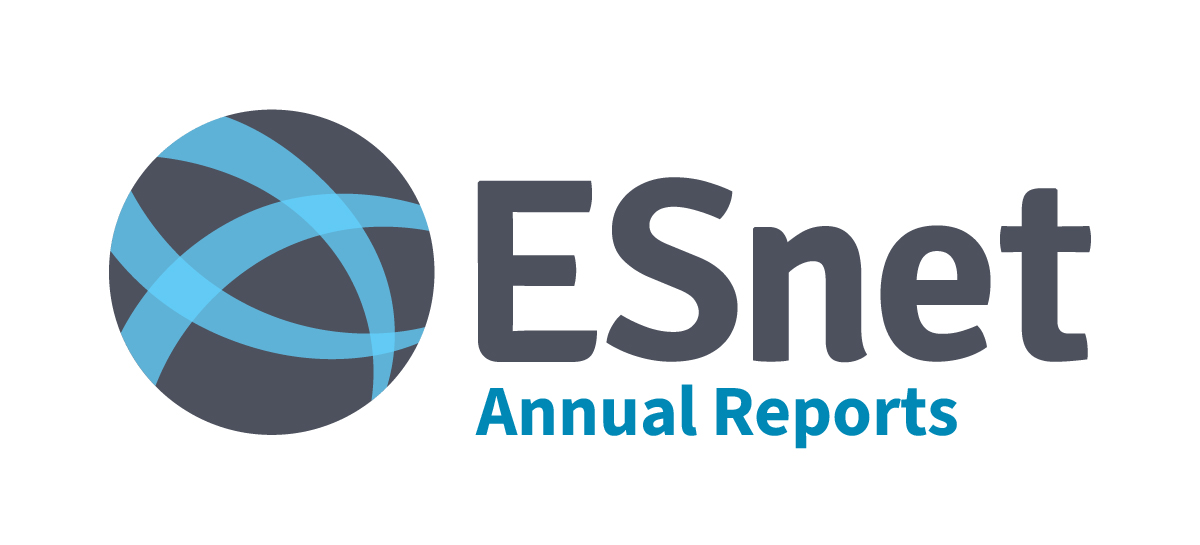
ESnet Signs First Trans-Atlantic Subsea Spectrum Lease
International connectivity is vital to ESnet’s mission, especially for data-intensive projects like the Large Hadron Collider (LHC), which generate roughly half of ESnet’s total traffic. Trans-oceanic links are particularly vulnerable to long outages — repairs can take weeks or months due to the limited number of submarine cable repair ships — making resilience a top priority. Because of this, ESnet is engineering our trans-Atlantic connectivity to support resilience for this mission-critical traffic even in scenarios where three cables have been severed at the same time.
ESnet’s trans-Atlantic plan includes a target of at least 3.2 Tbps of capacity across at least four completely physically diverse paths, using cutting-edge optical-spectrum services that will allow for long-term, cost-effective growth exceeding 10 Tbps in total.
In early 2024, ESnet signed our first trans-Atlantic spectrum lease — 25% of a fiber pair linking New York, Dublin, and London — through a 15-year agreement with Aqua Comms, with options to extend. To be good stewards of DOE funds, ESnet is collaborating with the European research network GÉANT to increase redundancy by splitting capacity and related costs for optical spectrum across four separate trans-oceanic cables.
In 2024, ESnet nearly quadrupled total trans-Atlantic bandwidth, from 700 Gbps to 2.7 Tbps, including lighting up 1.2 Tbps on the newly acquired spectrum. Another 25% of a trans-Atlantic fiber pair is in the process of being acquired, further strengthening resilience for mission-critical international science collaborations.

